

Exploration 3: Quadratics
Jaime Maxey
In this exploration we will explore quadratics. Let us first consider the equation x^2+bx+1=0. We will first manipulate the constant parameter c.
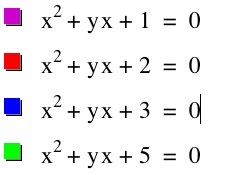
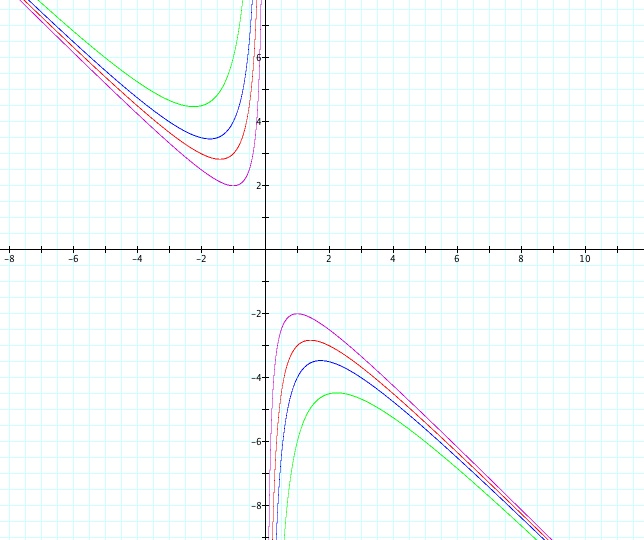

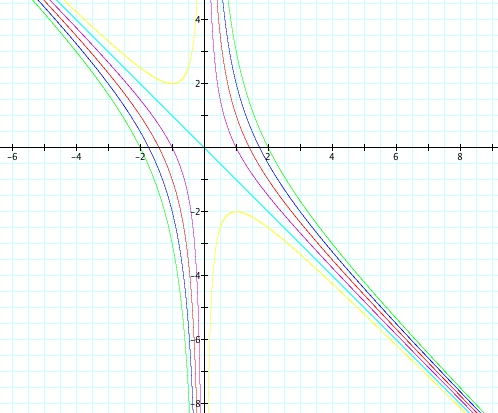
All together now
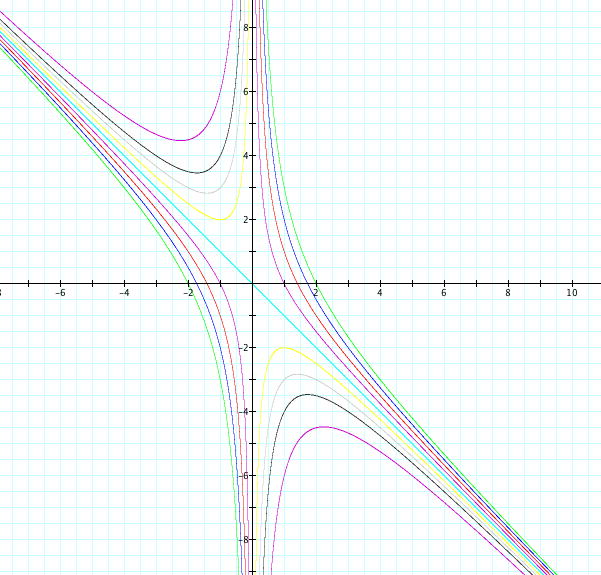
We can now see that we have a family of hyperbolas. When c=o, we have a line of the equation y=-x.
Now, if we take any particular value of b and overlay this equation on the graph, we are adding a line parallell to the x-axis. This line can intersect our curve in the xb plane. These intersection points correspond to the roots of the equation. If b>2, we will get to negative real roots. If b=2, then we will get one real negative root. If -2<b<2 we will not get any real roots. When b=-2 we will find one positive real root and then when b<-2 we will again find two real negative roots.
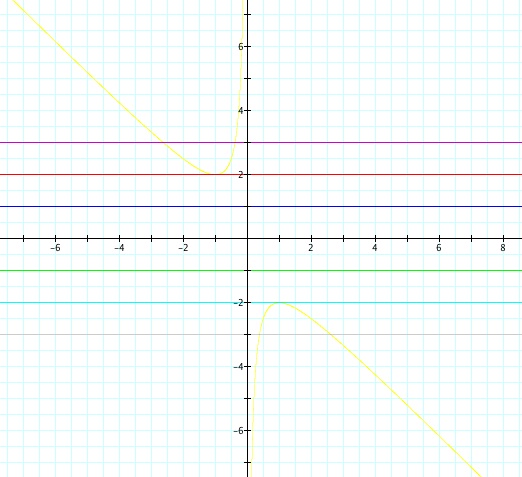
What about when c=-1?
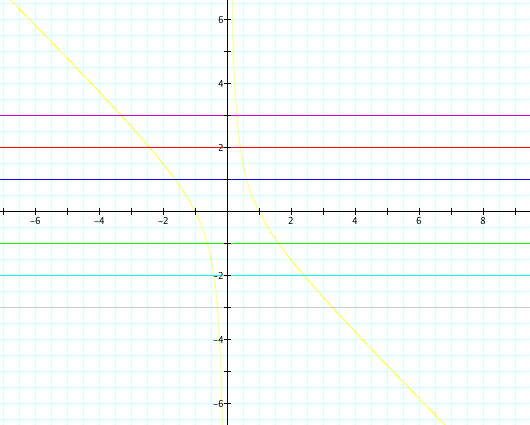
We will always have two real roots when c=-1.